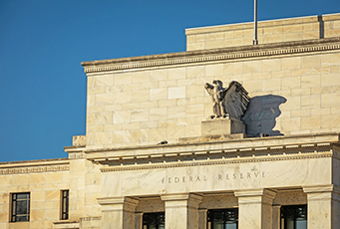With football season underway, you may find yourself rooting for your favorite team to "go long." With interest rates at their highest levels in 10+ years and the Fed signaling that more rate hikes are possible, you may also be tempted to "go long" in your fixed-income portfolio and lock in higher interest rates. But is now the right time to take a shot down the field?
While yields are up across the board in short and long-term bonds, investors can look under the hood of the Treasury yield curve to see that short-term bonds are currently paying more than longer-term bonds.
For example, as of August 31, 2023, the highest yield on the curve is the four-month Treasury at 5.61%, while the ten-year yields are 4.1%, the 20-year yields are 4.4%, and the 30-year yields are 4.2%. This is referred to as an inverted yield curve, which has only happened a handful of times in the last 50 years. A normal yield curve is one where yield and maturity increase together, meaning longer-term bonds yield more than shorter-term bonds.
How did we get here?
When inflation climbed to a 40-year high of 9.1% in June 2022, the Fed began aggressively hiking short-term interest rates to bring inflation down. As they began increasing rates, there was much discussion around whether the result would be a "hard landing" versus a "soft landing." A hard landing would mean higher rates would constrict the U.S. economy and fall into a recession.
As the Fed's rate hike campaign began, bond investors bet on a hard landing. This bet favored buying longer-term bonds to lock in higher yields in anticipation of a limited time window before yields fell. Investors anticipated the Fed would keep raising interest rates to curb inflation and cut rates once we entered a recession. Yields on shorter-term Treasury bills climbed well above yields on their longer-term counterparts, creating the inverted yield curve.
Fast forward to September 2023. Inflation has been easing over the past several months, with headline year-over-year inflation down to 3.2% as of the end of July. Meanwhile, the U.S. economy continues to show signs of solid footing despite the Fed raising the highest rates since the mid-2000s.
Now, some investors are positioning for a soft landing in which inflation returns to the Fed's 2% annual target while the economy continues to grow despite higher interest rates. If this trend continues, then rates could remain higher for longer. This is good news for bond investors but could have other volatile economic impacts, such as higher mortgage rates and business borrowing costs.
What does this mean for your fixed-income portfolio?
If you believe long-term yields are destined to fall once inflation reaches its target level in the near future, then you want to lock in your longer-term bond yields while you can.
If you believe rates will stabilize at a higher level for longer, you want to stay shorter on the yield curve for now. After all, 5-6% yields on short-term fixed income seemed impossible just a few years ago!
Keep in mind that with a shorter-term bond, you are subject to reinvestment risk at the prevailing rates when that bond matures.
So, as an investor, you can decide whether the current rates on longer-term bonds are worth locking in now. Or accept the reinvestment risk by taking the juicier short-term yield now, anticipating that longer-term yields will rise and provide better buying opportunities soon.
Over the last several months, the Bedel Financial team has taken small steps to lengthen the duration of our clients' fixed-income portfolios to lock in intermediate-term yields while remaining diversified on the shorter end of the curve.
We believe this positioning gives us a great opportunity to continue participating in higher short term yields while longer-term bonds can offer protection should the economy stall and rates move lower.
Schedule a Consultation
We have helped our clients answer these questions and more. If you want a clear understanding of your financial future, and need help making changes to reach your goals, schedule a consultation and we can get started.
The material has been gathered from sources believed to be reliable, however Bedel Financial Consulting, Inc. cannot guarantee the accuracy or completeness of such information, and certain information presented here may have been condensed or summarized from its original source. To determine which investments or planning strategies may be appropriate for you, consult your financial advisor or other industry professional prior to investing or implementing a planning strategy. This article is not intended to provide investment, tax or legal advice, and nothing contained in these materials should be taken as such. Investment Advisory services are offered through Bedel Financial Consulting, Inc. Advisory services are only offered where Bedel Financial Consulting, Inc. and its representatives are properly licensed or exempt from licensure. No advice may be rendered unless a client agreement is in place.
Recommended Articles
Worried About an AI Bubble? Three Strategies for Diversification
Ultimately, the appropriate strategy depends on the...
Private Equity and M&A in a Low-Rate World
Deal flow is the stream of business proposals, investment...





